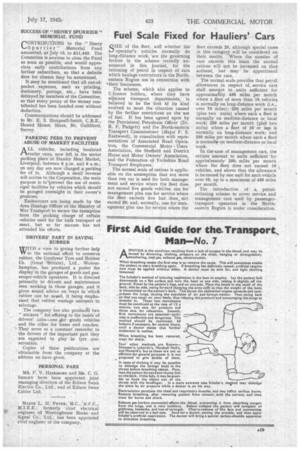Fuel Scale Fixed for Hauliers'Cars
Page 21

If you've noticed an error in this article please click here to report it so we can fix it.
SIZE of the fleet, ana whether the operator's vehicles normally do long-distance work,' are the governing factors in the scheme recently announced in this journal, for the rationing of petrol in respect of cars which haulage contractors in the Northeastern Region use in connection with *their businesses, The scheme, which also applies to C-licence holders, where they have se-Para te transport departments, is believed to be the first bf its kind evolved to meet the -situation caused by the further restrictions on the use of fuel. It has been agreed upon by the Provisional Petroleum Officer (Dr. R. F. Padgett) and the North-eastern Transport Commissioner (Major F: S. Eastwood), in consultation with representatives of Associated Road Operators, the Commercial Motor • Users Association, the Sheffield and District Horse and Motor Owners' Association, and the Federation of Yorkshire Road Transport Employers.
The normal scale of rations is applicable on the assumption that not more than one car is used for both management and service where the fleet does not exceed five goods vehicles; one for management plus one for service where the fleet exceeds five but does. not exceed 20; and, normally, one for management plus one for service where the fleet exceeds 20, although special cases in this category will be considered on their merits. Where the number of cars exceeds this basis the normal rations will not be increased on that account, but may be apportioned between the cars.
The normal scale provides that petrOl allowances in respect of, service cars shall amount to units sufficient for approximately 430 miles per month where a fleet of more than 10, vehicles is normally on long-distance work (i.e., over 75 miles); -250 miles per month (plus two units) where such a fleet is normally on mediam-distance or local work; 250 miles per month (plug two units) where a fleet of 10 or less is normally on long-distance work; and 250 miles per month where such a fleet is normally on medium-distance or local work.
In the case of management cars, the rations amount to units sufficient for approximately 250, miles per month where the fleet does not exceed 10 vehicles, and above that the allowance is increased by one unit for each vehicle over 10, up to a maximum of 430 miles per month.
The introduction of a petrolrationing scheme to cover service and management cars used by passengertransport operators in the Northeastern Region is under consideration.




















































